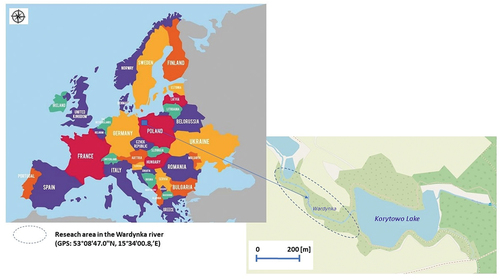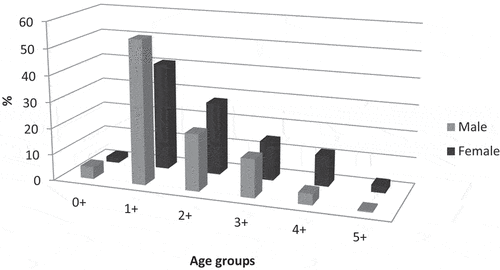Figures & data
Table I. Hydrochemical parameters of the Wardynka River at the site of the catches.
Table II. Mean (± SD) total length (TL), standard length (SL) (in cm), and body weight (in g) of male, female and juvenile stone moroko individuals in the Wardynka River.
Figure 2. Standard length (SL, cm) (A) and individual body weight (W, g) of stone moroko caught in individual months. Values marked with different letters (a, b) indicate statistically significant differences between females (○) and males (∆) in a given month (Mann–Whitney U test, p < 0.05); mean ± SD.

Figure 4. Percentage share of age groups in each month of the year in stone moroko from the Wardynka River.
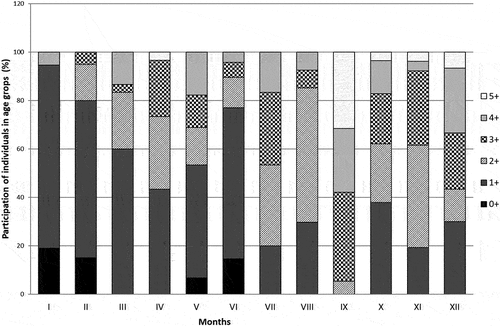
Table III. Estimation of von Bertalanffy growth function (VBGF) parameters for stone moroko in the Wardynka River.
Figure 5. Monthly fluctuations in the condition factor (CF) values of stone moroko from the Wardynka River. Values marked with different letters (a,b) indicate statistically significant differences in CF between females (○) and males (∆) in a given month (Mann–Whitney U test, p < 0.05); mean ± SD.
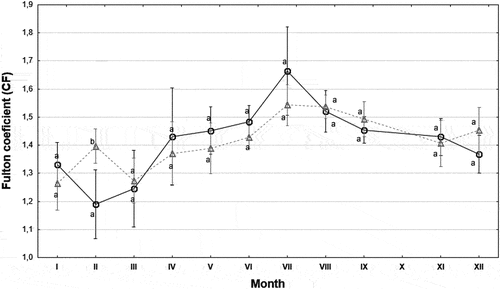
Table IV. Parameters of the length–weight relationship (LogW = a + b logTL) of stone moroko from the Wardynka River.
Table V. Parasites of stone moroko from the Wardynka River (2019–2020).
Figure 6. Mean results for standard length (SL) and weight (W) of stone moroko (topmouth gudgeon) inhabiting various types of inland water bodies according to literature data (Kapusta et al. Citation2008; Carosi et al. Citation2016; Benzer & Benzer Citation2020; Piria et al. Citation2020; Davies & Britton Citation2021; Baek et al. Citation2022).
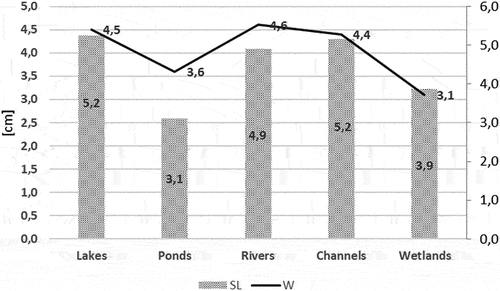
Table VI. Comparison of growth (in mm) characters of stone moroko in native and non-native areas.

